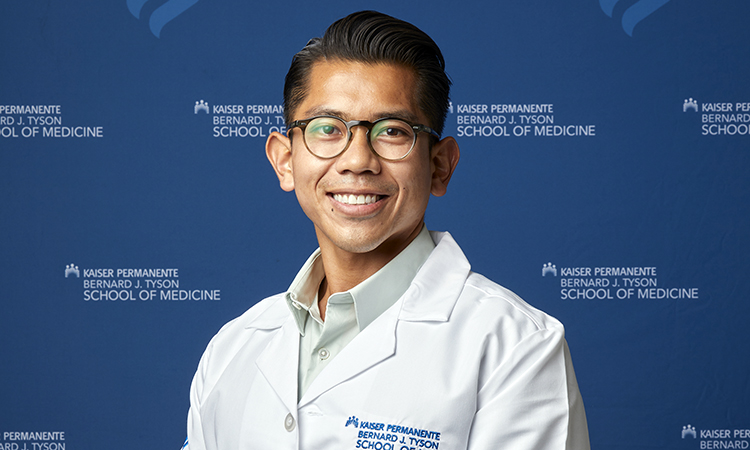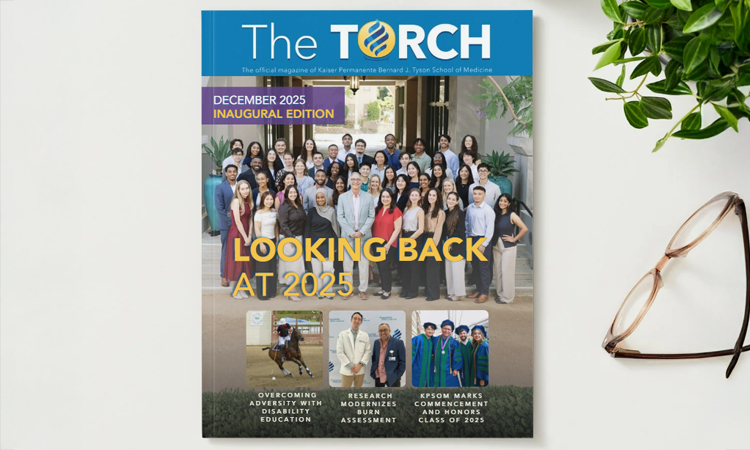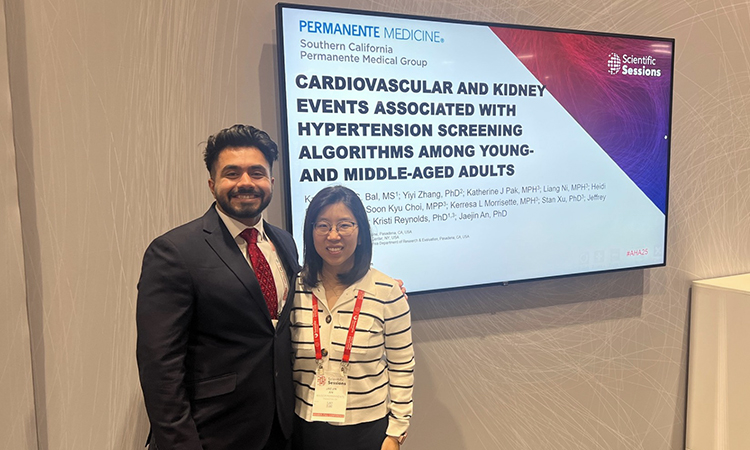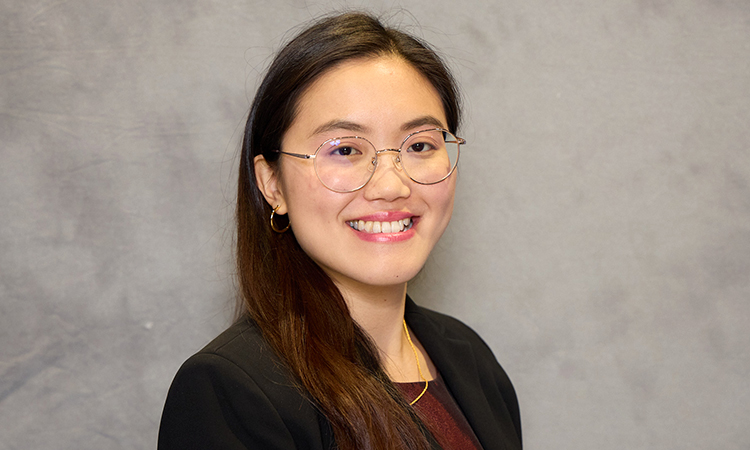Kaiser Permanente Bernard J. Tyson School of Medicine students Ahmad Alach and Alexander Argame recently became Society of Interventional Radiology (SIR) 2023 Medical Student Scholars. As part of this program, the students learn about Interventional Radiology (IR) at an early stage in their medical careers. In addition, both will receive free registration to the SIR 2023 conference, scheduled March 4 through 9 at the Phoenix Convention Center, each will receive special recognition during the meeting, and they have the opportunity to participate in dedicated medical student programming. The conference will expose the students to a broad range of learning environments with diverse topics related to IR and access to leading thinkers and faculty in the specialty.
We checked in with both students to better understand how they gained an interest in IR, what exposure they’ve had to the specialty thus far, what they hope to gain in attending the conference, and which mentors have helped to spark their individual interest in this particular area of specialty. In part 2 of our series highlighting these students’ experiences with the SIR 2023 Medical Student Scholar Program, we talk with Alexander Argame.
How were you exposed to the field of interventional radiology?
Prior to starting medical school, I worked as a Registered Nurse in Interventional Radiology in the acute care hospital setting of a Veterans Affairs facility. I witnessed firsthand from my experiences serving military veterans how they can face an intersection of racial and socioeconomic factors, as well as wartime exposures and invisible wounds of war, that can make them at higher risk for Peripheral Arterial Disease or cancers especially. Yet, because of the advancements in IR and collaboration with multiple specialties of the interdisciplinary team, such patients could be treated effectively with improved health outcomes, minimal invasiveness, and limb loss avoided.
Within my first year of medical school at KPSOM, I have been exposed to Vascular and Interventional Radiology through shadowing Dr. Alok Bhatt, MD, from Kaiser Permanente Los Angeles Medical Center. Additionally, through the KPSOM Vascular and Interventional Radiology Specialty Interest Group, I have participated in the Journal Club, which has given me the opportunity to further interact with other IR resident and attending IR physicians.
What about IR interests you most?
I smiled as I was standing in line at the Veterans Affairs hospital cafeteria, waiting to order my usual lunch: Chicken Caesar Salad. Mr. Jones [a patient alias], a Hispanic male in his 50s wearing his Vietnam Veteran hat, crisp white t-shirt tucked into his light blue Levi’s Jeans, was in the distance, holding his tray of food, laughing as he chatted with some of his fellow comrades. Just one week prior, I was taking care of him as his Interventional Radiology Registered Nurse for a catheter-directed thrombolysis procedure to treat his acute pulmonary embolism. I marveled at the innovation, advancements, and minimally invasive approach that IR can bring to deliver patient-centered care with great outcomes. I know that the field of IR is continuing to grow, contributing to the advancement in medicine. This was one of my motivations for pursuing medicine, even after having been a Registered Nurse for several years, to further my impact for patients the way I have seen how the specialty of IR can.
Being a second-generation Filipino immigrant, I have witnessed and experienced health inequities in my own heritage which I believe IR can contribute to alleviating for future generations. When my parents and relatives immigrated from the Philippines in the 1980s, they faced many hardships associated with acculturation. They had to live in overcrowded households as well as zip codes associated with high crime rates, higher rates of pollution, and food insecurity. Additionally, they had issues with navigating and accessing the healthcare system. All these issues have culminated decades later to late stages of chronic diseases that have led to stroke, limb loss, and other complications associated with Peripheral Arterial Disease. These are issues that IR can address well, especially with the inclusiveness of the specialty.
What do you hope to gain by attending the SIR Annual Scientific Meeting?
The SIR Annual Scientific Meeting would be my first conference experience as a medical student, and so I am very much looking forward to it. By attending the SIR Annual Scientific Meeting, I hope to expand my perspectives and understanding of how IR can truly contribute to diversity, equity, and inclusion, especially for the military veterans, Filipino population and immigrants, and underserved communities I wish to serve in the future. Additionally, I want to get to know the community of people dedicated to the specialty of IR better, having meaningful conversations with them, exploring their motivations to contribute to the advancements to medicine as I know this would further inspire me in my pursuit of this specialty. Lastly, I am excited to see how IR is further expanding in its already innovative approach to patient-centered, minimally invasive care.
Have any KPSOM faculty or staff assisted you in gaining more exposure in the area of IR?
Coming into KPSOM, IR was a field I was really interested in. KPSOM provided even more resources and guidance to help me explore IR even further. I feel very grateful to have had Valinda Lee of the Career Advising Office to facilitate my IR physician shadowing experiences. Also, at the beginning of the semester, the Office of Student Affairs team hosted a Surgery/Surgery Subspecialties Networking Event where I was able to connect with an IR resident and attending physician to learn more about the specialty. Because of all of this, I have been able to get more exposure to IR at Kaiser Permanente Los Angeles Medical Center with Dr. Alok Bhatt, MD, with the opportunity to collaborate on several Educational Exhibit poster presentations for the upcoming 2023 Society of Interventional Radiology annual medical conference.
Additionally, Dr. Ali Ghobadi, MD, was my first-semester Scientific Basis of Healthcare Facilitator to whom I had expressed my interest in IR early in the semester. Because of this, he became more intentional in helping me tie relevance to the clinical sciences and vignettes we were learning in the classroom and Anatomy lab to IR. Lastly, being mentored by Tong L., a medical student from KPSOM’s inaugural class and board member of KPSOM’s Vascular and Interventional Radiology Specialty Interest Group, has been very helpful for me in getting connected with other resources and opportunities for IR.
Read more about the SIR 2023 Medical Student Scholar Program and Ahmad Alach here.



